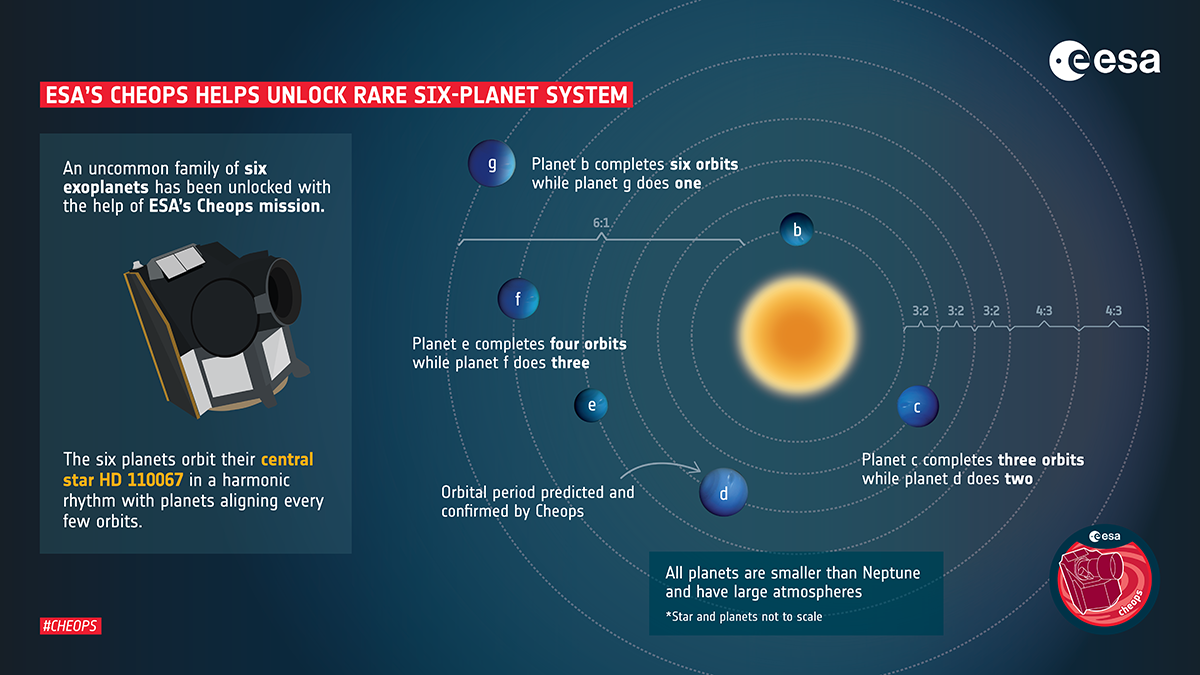The Milky Way is full of strange galaxies and cosmic discoveries just to be made. Case in point, a new solar system discovered by NASA’s Transiting Exoplanet Survey Satellite (TESS) and the ESA’s CHaracterising ExOPlanet Satellite (CHEOPS) has six planets, and they’re all moving in synchrony together. This is one of only a few synchronous solar systems we’ve ever discovered.
To call the system baffling is a bit of an understatement. This rare group of solar systems is exciting to find, though, because it can help us learn more about planet formation and planetary evolution.

The planets are in a “gravitational lockstep.” Astronomers say the planet closest to the star has a 3/2 resonance, meaning it makes three orbits for every two orbits the planet beyond it makes. That pattern is repeated among the four planets closest to the star, with the outermost planets sharing a 4/3 resonance.
The resonant orbits in this synchronous solar system are solid, too, the astronomers say. That likely means these planets have been locked in this dance for billions of years since the system first formed.
Most planets tend to form around stars with some form in resonance. However, these patterns can easily be disturbed, at least from what we can tell. We’ve discovered several multi-planet systems. But none of them appear to have any kind of resonance to them. Only two planets within our own solar system are in resonance (Neptune and Pluto share a 3/2 resonance, though Pluto isn’t considered a planet anymore).
As such, discovering these rare synchronous solar systems is exciting, and could help us learn a lot more about how our own solar system formed billions of years ago. Unfortunately, none of the six planets within this system lie within the habitable zone, so the chances of finding evidence of life as we know it are unlikely.
The researchers involved in the discovery highlight their work in a new study available in the journal Nature.








